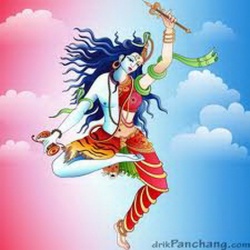Difference between revisions of "Five Vehicles"
| Line 2: | Line 2: | ||
<poem> | <poem> | ||
| − | [[Five Vehicles]] | + | [[Five Vehicles]]; [[Humanity Vehicle]] [[Buddhism]], or translated {{Wiki|phonetically}} from [[Wikipedia:Mandarin Chinese|Mandarin]], Jen [[Chen]] [[Buddhism]]: The main objectives of Jen [[Chen]] [[Buddhism]] are to {{Wiki|purify}} the [[human]] [[mind]] and to promote a blissful {{Wiki|culture}} for [[humanity]], so that we may realize a [[happy]] and blissful family, and [[pure land]] in this [[world]]. |
| + | |||
| + | [[Deva Vehicle]] [[Buddhism]]: The [[doctrines]] expounded to the [[Devas]] or [[celestial beings]]. | ||
| + | |||
| + | [[Small Vehicle]] [[Buddhism]], [[Sravaka]], or [[Hinayana Buddhism]]: The [[doctrines]] for those who cultivate for the sake of [[personal liberation]] and [[aspiration]] for personal {{Wiki|salvation}}. The [[highest]] level of [[attainment]] forcultivators of [[Hinayana Buddhism]] is the [[Arahat]]. | ||
| + | |||
| + | [[Middle Vehicle]] [[Buddhism]] or [[Pratyeka-Buddha]] [[Buddhism]]: This is slightly more advanced than the [[Small Vehicle]] [[Buddhism]]. Like those of the [[Small Vehicle]] [[Buddhism]], practitioners of the [[Middle Vehicle]] [[Buddhism]] are not concerned about the {{Wiki|salvation}} of other [[sentient beings]]. | ||
| + | |||
| + | [[Greater Vehicle]] [[Buddhism]], [[Bodhisattva Vehicle]] [[Buddhism]] or [[Mahayana Buddhism]]: While the [[Small Vehicle]] is like a motorcycle or a bicycle which carries one or two persons at a [[time]], the [[Greater Vehicle]] is likened to a train or a ship which can ferry many passengers on a single trip. Thus, the [[doctrines]] of the [[Greater Vehicle]] are for personal {{Wiki|salvation}} as well as for the {{Wiki|salvation}} of other [[sentient beings]]. Practitioners of the [[Greater Vehicle]] [[Buddhism]] aspire to ferrying both [[self]] and others to the [[shore of enlightenment]]. Amongst the well known [[Bodhisattvas]] of the [[Greater Vehicle]] [[Buddhism]] are [[Avalokitesvara]] or [[Kuan-Yin]], [[Mahasthama]], [[Manjusri]], [[Ksitigarbha]] and last but not least, [[Samantabhadra Bodhisattva]]. | ||
| + | |||
| + | Although the [[Five Vehicles]] of [[Buddhism]] are means through which one attains [[Buddhahood]], they were expediently taught by [[Sakyamuni Buddha]] according to the capabilities of the [[sentient beings]]. In [[reality]] there is only one [[vehicle]] that leads to [[Buddhahood]] as is stated in the [[Lotus Sutra]], "In the domain of the [[Buddhas of the ten directions]], there is only One [[Vehicle]] of [[Buddha-dharma]], not two nor three, for the rest were taught expediently by the [[Buddha]].".. | ||
| + | |||
| + | |||
[[Pancayana]] in [[Sanskrit]]. The [[Five Vehicles]] conveying the [[karma]]-reward which differs according to the [[vehicle]]: | [[Pancayana]] in [[Sanskrit]]. The [[Five Vehicles]] conveying the [[karma]]-reward which differs according to the [[vehicle]]: | ||
Latest revision as of 23:41, 22 April 2014
Five Vehicles; Humanity Vehicle Buddhism, or translated phonetically from Mandarin, Jen Chen Buddhism: The main objectives of Jen Chen Buddhism are to purify the human mind and to promote a blissful culture for humanity, so that we may realize a happy and blissful family, and pure land in this world.
Deva Vehicle Buddhism: The doctrines expounded to the Devas or celestial beings.
Small Vehicle Buddhism, Sravaka, or Hinayana Buddhism: The doctrines for those who cultivate for the sake of personal liberation and aspiration for personal salvation. The highest level of attainment forcultivators of Hinayana Buddhism is the Arahat.
Middle Vehicle Buddhism or Pratyeka-Buddha Buddhism: This is slightly more advanced than the Small Vehicle Buddhism. Like those of the Small Vehicle Buddhism, practitioners of the Middle Vehicle Buddhism are not concerned about the salvation of other sentient beings.
Greater Vehicle Buddhism, Bodhisattva Vehicle Buddhism or Mahayana Buddhism: While the Small Vehicle is like a motorcycle or a bicycle which carries one or two persons at a time, the Greater Vehicle is likened to a train or a ship which can ferry many passengers on a single trip. Thus, the doctrines of the Greater Vehicle are for personal salvation as well as for the salvation of other sentient beings. Practitioners of the Greater Vehicle Buddhism aspire to ferrying both self and others to the shore of enlightenment. Amongst the well known Bodhisattvas of the Greater Vehicle Buddhism are Avalokitesvara or Kuan-Yin, Mahasthama, Manjusri, Ksitigarbha and last but not least, Samantabhadra Bodhisattva.
Although the Five Vehicles of Buddhism are means through which one attains Buddhahood, they were expediently taught by Sakyamuni Buddha according to the capabilities of the sentient beings. In reality there is only one vehicle that leads to Buddhahood as is stated in the Lotus Sutra, "In the domain of the Buddhas of the ten directions, there is only One Vehicle of Buddha-dharma, not two nor three, for the rest were taught expediently by the Buddha."..
Pancayana in Sanskrit. The Five Vehicles conveying the karma-reward which differs according to the vehicle:
1) Human Vehicle - rebirth among human conveyed by observing the Five Commandments (Five Precepts)
2) Deva Vehicle - among the devas by the Ten Forms of Good Actions (Ten Wholesomeness)
3) "Sound-Hearing" Arhat - among the sravakas by the Four Noble Truths ; Small Vehicle Buddhism, Sravaka, or Hinayana Buddhism: The doctrines for those who cultivate for the sake of personal liberation and aspiration for personal salvation. The highest level of attainment for cultivators of Hinayana Buddhism is the Arahat.
4) "Enlightened by Conditions"; Middle Vehicle ; Arhat - among the pratyeka-buddhas by the Twelve Nidanas
5) Bodhisattva - among the Bodhisattvas by the Six Paramita
Source
Pancayana in Sanskrit. The Five Vehicles conveying the karma-reward which differs according to the vehicle:
- 1 Human Vehicle - rebirth among human conveyed by observing the Five Commandments (Five Precepts)
- 2 Deva Vehicle - among the devas by the Ten Forms of Good Actions (Ten Wholesomeness)
- 3 "Sound-Hearing" Arhat - among the sravakas by the Four Noble Truths
- 4 "Enlightened by Conditions" Arhat - among the pratyeka-buddhas by the Twelve Nidanas
- 5 Bodhisattva - among the Bodhisattvas by the Six Paramita
